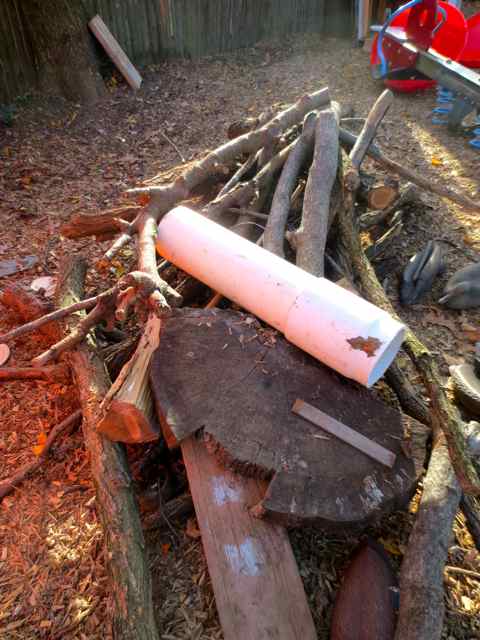What We Hope Children Will Learn
"I hate my backpack. I hate it. I just hate it." All of this was punctuated with a kicking along of said backpack as he walked around the corner...hate, hate, hate-ty, hate, hate. He wasn't talking to anyone, but people were listening, because one of the other children said, "You are throwing that word around like it doesn't mean anything." This statement, delivered in a simple and observational tone, put a stop to that sing song.

I don't know what it is about backpacks at our school. Now with this post, I have two posts that begin with something about backpacks! This post and even that other one aren't about backpacks though. This one is about what we hope children learn at our school.
It is enrollment season (parents apply to join our cooperative) and I spend a lot of time thinking about this question since visiting parents are very interested in the answer.
Yesterday, we had a work session at school. As I stood in the playground with the parents working there, we were joking around about chainsaws, as you do. I told them that I added something to my "What I want children to learn" list. The list begins like this..."What the claw end of a hammer is for", "How to use a crow bar", and I told them I recently added, "How to best drag a large tree branch around the yard" after one of the 3-year olds decided to make a log and branch pile-up. He adds to it each day and it was an important lesson to figure out how to drag a branch efficiently and then throw it on the pile.
Later that evening though, as I was reading the book, The One and Only Ivan by Katharine Applegate, I arrived at the part when Ivan, the gorilla makes a promise to Stella, the elephant. It reminded me of our story time discussion last week when one of the children said solemnly, "You have to be careful when you make a promise." The promise discussion was prompted by a book we read a few weeks ago, The Bearskinner. This book was a very complicated retelling of a Grimm fairytale. It has bonus points for illustration and author (Max Grafe and Laura Amy Schlitz), certainly, but we had to fish around for the take-aways. The one that resonated with me was the part when the father promises one of his daughters in marriage to the beast-person, the Bearskinner. That is a common theme in a Grimm tale and I had to pause as we read it. Children, take a minute and think about that promise. Is it his to make?
Being careful with promises and thinking about the meaning of words are both things we talk a lot about at school. To hear a child cue another with something we have shaped, "You are throwing that word around like it doesn't mean anything" and "you have to be careful when you make a promise" reminds us that we should be thoughtful about which words we use and how we use them -- that words hold meaning. We talk about how the words we use are like seeds that we plant. They will grow. We have to tend the plants they grow into. Those cues are lovely to hear back, because it is not shutting down conversation. It is about tending the plant. We didn't say that this child's feeling about his backpack was not valid and we know he stopped to consider his words, "What does it mean to hate my backpack?" We know that he considered the cue because he changed tact and said, "It's just too heavy."
We do not ban words. All words are important. What we want children to learn is that ideas are expressed, explored, and exchanged through words. We want to take care with them. When a child came to me last week and said, "Lesley, I am a boy inside and outside." He was planting a thought-filled seed. This child is careful with his words and deeds. He will come and show me a new drawing or a construction he has made. He knows that I think his work is important work. I sometimes imagine that he is parking information with me, formally checking in, all systems go. We had talked about gender and gender identity recently and he had obviously been conducting a systems check. He is a boy inside and outside. Check. That is his systems check, but now he will go out into the world knowing that other people's systems may check out differently.
I do want children to learn about how to use tools, not just hammers and crow bars, but also pens and paintbrushes. I want them to learn to move branches, to build houses, fix cars, and how to fold clothes. I want them to learn how to climb and when not to climb. All of that is important, but the idea that their ideas have value and that these can effectively be expressed through words should top that list.









